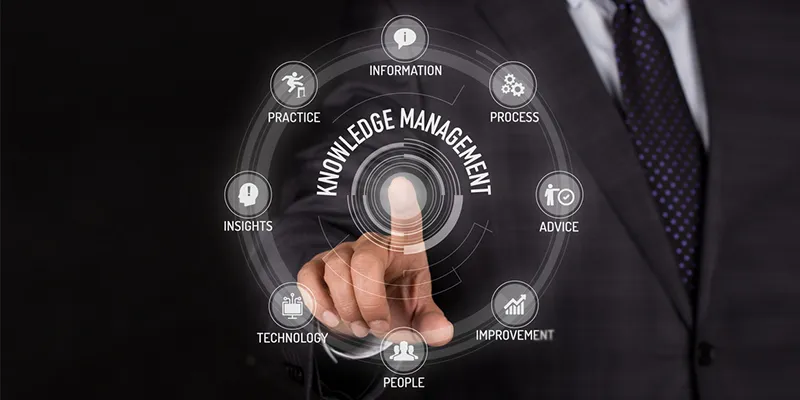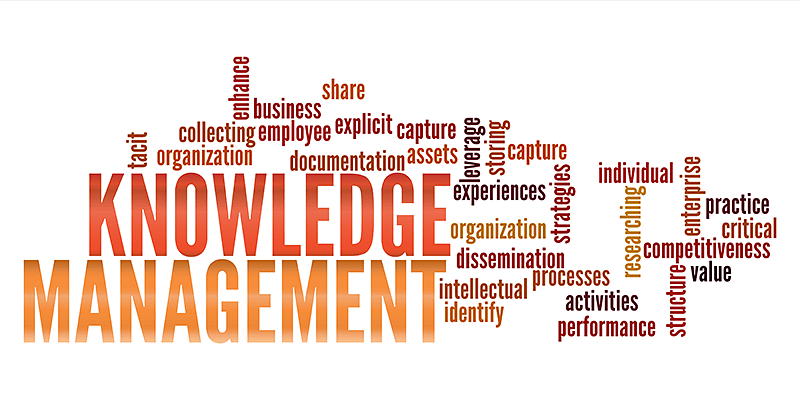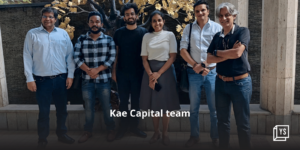Hank Malik and Jordan Richards are co-authors of the publication, Knowledge Management: A primer and catalyst to support Digital Transformation.
Hank was Knowledge Management Lead at Petroleum Development Oman, which won the Global MIKE Award 2019. He has over 20 years of global experience in KM, transformation, innovation, and learning. Jordan has led IT solutions implementations at firms for over 25 years, and specialises in enterprise business solutions and digital architecture.
As media partner for CII’s Global Knowledge Summit, YourStory moderated the panel on Knowledge Excellence: Winners of the Global MIKE Awards, and published profiles of the Most Innovative Knowledge Enterprise (MIKE) award winners, including Petroleum Development Oman.
Hank Malik will be speaking this week at the virtual meetup of the Bangalore K-Community, a group of professionals in the knowledge management (KM) space. See my takeaways from the earlier meetups on KM at HGS, KM at Unisys and Work From Home (WFH).
The authors intend to share key guiding principles and personal insights, “without being too prescriptive or academic.” Here are my six key sets of takeaways from the 60-page primer.

I. Foundations
The authors cite definitions of knowledge by experts like Tom Davenport and Larry Prusak: “Knowledge is a fluid mix of framed experience, values, contextualised information, and expert insight that provides a framework for evaluating and incorporating new experiences and information.”
Knowledge management (KM) initiatives call for a blend of intellectual, technical, people, and process enablers. As seen in practice, individuals and organisations differ in how they define ‘knowledge’ and implement KM initiatives.
KM is a process that “helps with the better creation, sharing, and reuse of organisational knowledge.” For businesses, the focus is on actionable and valuable knowledge that can be trusted and validated.
The authors divide the phases of evolution of KM and related tools into four categories: Phase 1 (groupware), Phase 2 (Collect – content), Phase 3 (Connect, Collaborate), and Phase 4 (digitalisation, AI/ML).
The authors also share insightful quotes on KM:
Tom Davenport and Larry Prusak: In a knowledge-driven economy, talk is real work.
Ray Stata: The rate at which organisations learn is the only sustainable competitive advantage.
II. Guidelines and frameworks
The authors offer 14 guiding principles of KM. They include leadership commitment, a clear business case, precise operating model, bottom-up flows of knowledge, governance, and clear communication of benefits.
KM approaches should be consistent and standardised. There should be clarity of vision, and alignment with digital strategy. Recognition and rewards should be given to “celebrate success loudly,” the authors advise.
KM initiatives should not lead only with technology, the authors caution. “Throwing money at expensive IT solutions and ignoring the people and change elements could lead to failure with buy-in and ultimately engagement,” they warn.
The authors regard a KM framework to be the organising foundation. KM building blocks or components include data, skills, communities, and lessons learned. Governance, culture, and processes are effective KM enablers, supported by technology.
The authors recommend specific steps like creating an organisational ‘Yellow Pages of Individual Skills’ and incentives for subject experts to share knowledge. Communities of Practice should be supported by a Community Sponsor and Community Coordinator or Moderator.
Processes for best practices and lessons learned should build and capture both personal and collective learnings in a reflective way, the authors advise. Where possible, participation should involve external experts as well to make the experiences wider and learnings richer.
In sectors like oil and gas, KM processes commonly include learning before, during, and after key events, the authors explain. Each stage involves identifying, capturing, and storing key knowledge assets.
Formal KM processes include lessons learned, peer assist, best practice capture, and storytelling. Digitalisation via video can open up knowledge assets for wider audience communication.
In addition to formal structures, the authors recommend informal and simple communication methods such as `lunch and learn`, morning briefings, one-pagers, and using social media.

III. KM governance
KM governance should be driven by a KM Sponsor or Champion, and the KM Steering Group. The team should be multi-skilled with a blend of people, processes, change management, IM, and IT skills, the authors emphasise.
Key roles are Head of KM, KM Specialists, Knowledge Content Managers, and Knowledge Change and Communications Manager. Communities of Practices should be rolled out in highly valued knowledge and expertise areas. Skills in promotions, training, and skills transfer are valuable.
“KM should be aligned closely with HR to better capture your staff’s current skills, know-how, and identify expertise gaps that need addressing,” the authors advise.
“Truly experienced knowledge managers are hard to find, so having the right training and skills plans in place are important,” they recommend. Skills assessment surveys help here.
Based on their extensive experience, the authors recommend a five-year roadmap for KM initiatives, with a KM maturity assessment or `health check’ along the way. It helps to get buy-in via quick wins in the first 100 days, the authors advise.
While much has been said about the free flow of knowledge, the authors also caution that security is a key concern in KM as well. They describe three clusters of issues here: TEP (technology, education, policy), CIA (confidentiality, integrity, availability), and SPT (storage, processing, transmission).
IV. KM impacts
KM impacts can be felt at multiple levels, ultimately leading to improvements in productivity, quality, innovation, and risk management.
KM metrics and KPIs, using approaches like a balanced scorecard, can help track progress. Business benefits of KM can include improved responsiveness to customers and partners, increased problem-solving ability, and individual competency development.
Other impacts include faster access to the right skills, knowledge retention, and preparedness for the opportunities of digital transformation. Given the authors’ extensive experience, a few examples or cases here would have been a welcome addition to the material, or in a subsequent full-fledged book.

V. KM and digital transformation
KM’s strengths in human capital asset management can effectively support digitalisation initiatives.
“The reality is that digitalisation is happening already, so KM needs to embrace urgently the opportunities and offer a unique value-added proposition,” the authors observe.
KM is a key pillar of digital transformation, via analytics, micro-services, and continuous improvement. Digital technology acts as a “connecting platform” to bridge structural and functional silos. Effective KM can give a performance boost to digitalisation, by fine-tuning the creation of quality data and generating business insights to create value.
The authors describe three focus areas of digital workplace tools: communication, collaboration, and conferencing. Conferencing tools promote real-time interaction and ideation that facilitate the sharing of tacit knowledge.
“Collaborative tools create a definitive pathway for retrieving difficult to find or hidden knowledge,” they write. Collaborative social network tools should be engaging and easy to use, and can help to start a “new digital way of working.”
The authors emphasise the importance of collaboration, where all parties’ goals are achieved. In contrast, cooperation is about working in harmony but with different goals, while helpfulness is merely good social behaviour.
Other techniques to use are social network analysis (SNA), or the use of algorithms to unearth and map out social networks, contacts, and personality diagrams
“Digital processes, in turn, can greatly aid a key principle of KM, namely to transform data plus information plus experience into really actionable and valuable new knowledge that can be acted upon,” the authors explain.
They urge the traditional KM team in the organisation to acquire new digital skills and services to take advantage of the exciting opportunities new technology can bring. “KM should be an essential enabler for digital transformation – and a de facto component in any high-yield top-performing businesses,” the authors emphasise.
VI. KM and AI
KM and be effectively paired with artificial intelligence (AI) as well, the authors argue. “Most fully-floated KM systems come with the inherent ability to filter, sort, and optimise data with a goal of purposing it into actionable insight,” they explain.
AI and ML scale-up the means of processing data. “AI arms KM systems with the ability to spot the subtle relationships and nuanced variations existing among data sets,” the authors write.
Such “analytics on steroids” and big data approaches help zoom in on patterns, predictions, answers, and recommendations. “AI brings a much-needed dose of automation into the field of KM,” the authors emphasise; it can effectively handle dynamic data and multiple variables.
“In KM we see a unique opportunity combined with Digital to learn smarter, better and quicker,” they infer.

The road ahead
Other trends identified by the authors include the creation of the first international ISO KM Systems Standard ISO 3040, at the end of 2018. Awards in the field of KM include those given by the American Productivity Quality Center (APQC), Knowledge and Innovation Network (KiN), KM World, and Most Innovative Knowledge Enterprise (MIKE) award.
There is a great opportunity for KM to “embrace technology better and reinvent itself,” and for knowledge workers to catalyse their personal development in the knowledge-based economy, the authors explain.
In sum, the primer provides a compact overview of the field of organisational knowledge and learning, along with personal insights on how this connects to digital transformation and AI.
With the combination of proven approaches to KM and the exciting introduction of digitalisation, there should be a bright and rewarding future for the discipline of KM, the authors sign off.










